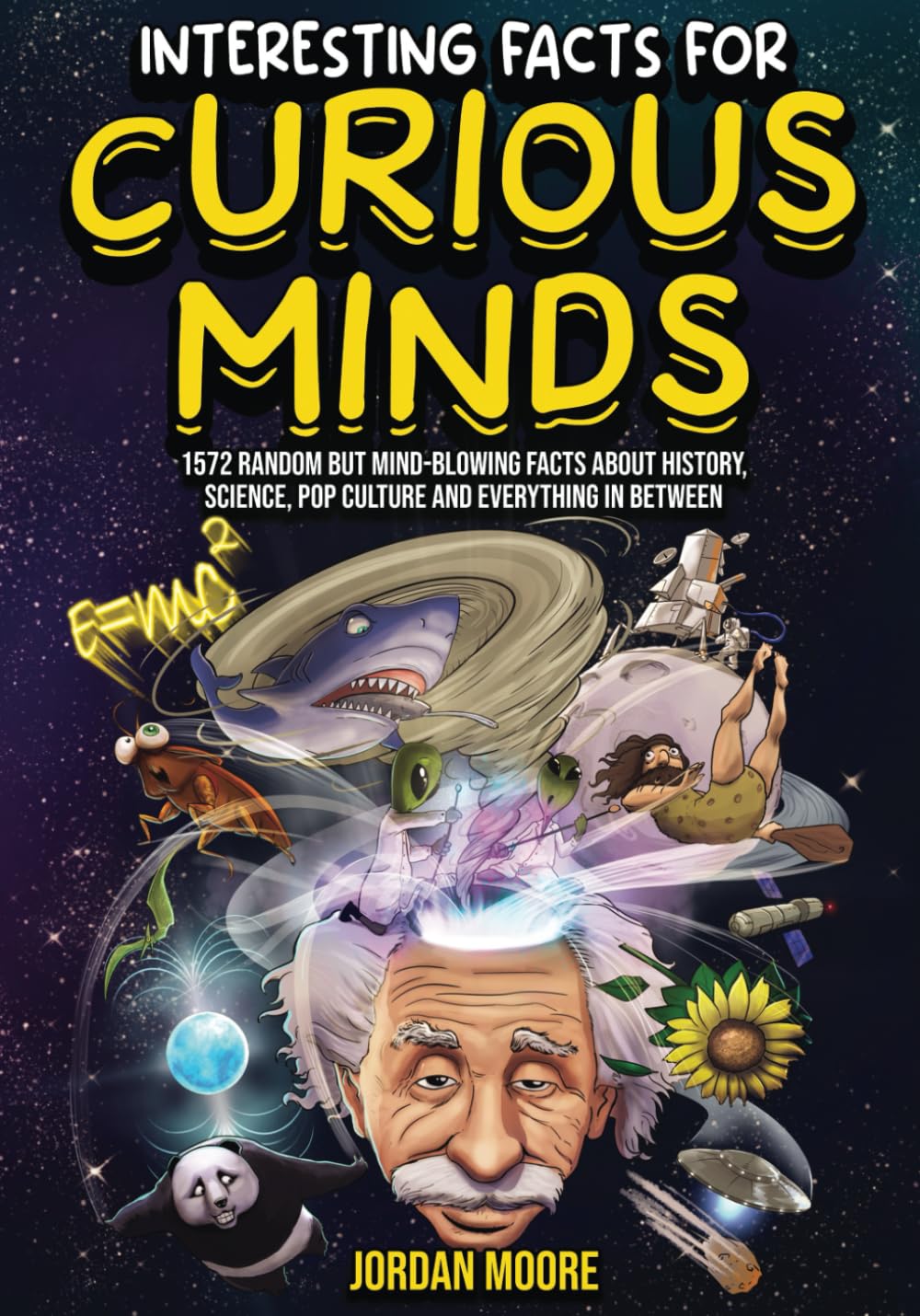
Interesting Facts For Curious Minds: 1572 Random But Mind-Blowing Facts About History, Science, Pop Culture And Everything In Between
Say What?
bySay what? Language is an intricate and fascinating construct that reflects the depth and diversity of human thought. The Indo-European language family, which includes the majority of European languages as well as languages like Hindi and Farsi, is spoken by nearly half of the world’s population, demonstrating its significant global influence. This linguistic group highlights the widespread use of languages such as English, which showcases the complexity of its vocabulary, especially with words like “antidisestablishmentarianism,” a 28-letter term that epitomizes the rich, layered structure of the language. English, as one of the most widely spoken languages, serves as a testament to how language evolves and adapts to societal needs, with its capacity to absorb and integrate influences from other tongues over time.
In exploring the history and evolution of language, we delve into the classical disciplines of grammar, rhetoric, and logic, which have shaped human communication and thought for centuries. These frameworks have been instrumental in the way we organize our ideas, structure sentences, and persuade others through speech and writing. The development of distinct linguistic varieties, particularly the divergence of British and American English, has also been influenced by historical figures like Noah Webster. Webster’s 1828 publication of the American Dictionary of the English Language played a pivotal role in defining American English, particularly by standardizing spellings that differed from their British counterparts. This divergence between British and American English continues to reflect cultural identities and preferences, underscoring how language serves as a living, evolving entity influenced by history and geography.
While the Indo-European languages dominate much of the world, the Basque language stands out as a unique anomaly. Unrelated to any other major language family, Basque is spoken by about 750,000 people in regions of Spain and France. Its origins remain a mystery, adding to its mystique as a linguistic isolate that has survived for centuries. The story of Basque serves as a reminder of how diverse and complex language can be, as it is not bound by the linguistic roots shared by most of the world’s languages. In addition to this linguistic anomaly, the history of written communication further illustrates humanity’s journey through language, with important milestones such as the Moabite Stone’s early use of punctuation and the intricate hieroglyphs of ancient Egypt and Mesopotamia. These foundational writing systems laid the groundwork for modern communication, enabling societies to record their histories and ideas for future generations.
The evolution of language is not just confined to spoken or written forms, as seen with the creation of Braille by Louis Braille. Braille was developed in the 19th century to help the visually impaired read and write, offering them a pathway to education and independence. It is a striking example of how language adapts to meet the needs of different communities, allowing those who were previously marginalized to access knowledge and engage with society in meaningful ways. This is a testament to the power of language as an inclusive tool that can break down barriers and offer opportunities to people of all abilities, ensuring that no one is excluded from the wealth of human knowledge.
Looking beyond the Indo-European family, languages such as Chinese and Tibetan, which belong to the Sino-Tibetan family, highlight the vast linguistic diversity that exists outside of this dominant group. These languages are spoken by over 22% of the global population, further emphasizing the variety of human communication. Despite the overwhelming prevalence of Indo-European languages, efforts to preserve and revitalize other languages, such as Hebrew, showcase the ongoing cultural and historical significance of language. The revival of Hebrew as a modern spoken language demonstrates the power of language to shape and reflect cultural identity, offering a model for how languages can be reintroduced into contemporary contexts even after centuries of disuse.
Languages are full of quirks, many of which spark lively debates among speakers and writers alike. Palindromes, words or phrases that read the same backward and forward, offer one such fascinating linguistic puzzle. Other unique language traits include the specific ways certain languages handle affirmations, such as the Gaelic response to statements, which provides an intriguing look into the syntax and cultural context of communication. Additionally, there are ongoing debates about grammatical constructions, such as the use of split infinitives, that continue to captivate language enthusiasts and professionals. These discussions illustrate the nuances of language, with speakers and writers constantly striving for clarity, precision, and style in their communications.
Another area of interest is the discussion around the serial comma, a topic that has long divided grammarians and writers. While some argue that it is essential for clarity, especially in lists, others claim that its use is redundant. This debate is just one example of the wider discussions surrounding the rules and preferences in language, which often shift depending on regional, cultural, and stylistic factors. Beyond these intricacies, the Afro-Asiatic language family, which includes languages such as Arabic and Hebrew, adds another layer to the rich tapestry of global communication. The diversity within this family offers a deeper understanding of how language has evolved in different regions and cultures, shaping the ways people understand the world around them.
Ultimately, language is not just a tool for communication; it is a reflection of human culture, identity, and history. Whether through the creation of new writing systems, the ongoing evolution of existing languages, or the debates over grammatical rules, language continues to shape the way we connect with one another and express our ideas. As society progresses, the role of language remains vital in preserving our heritage while enabling us to engage with new ideas and technologies, showing that the power of language is both timeless and ever-evolving.

